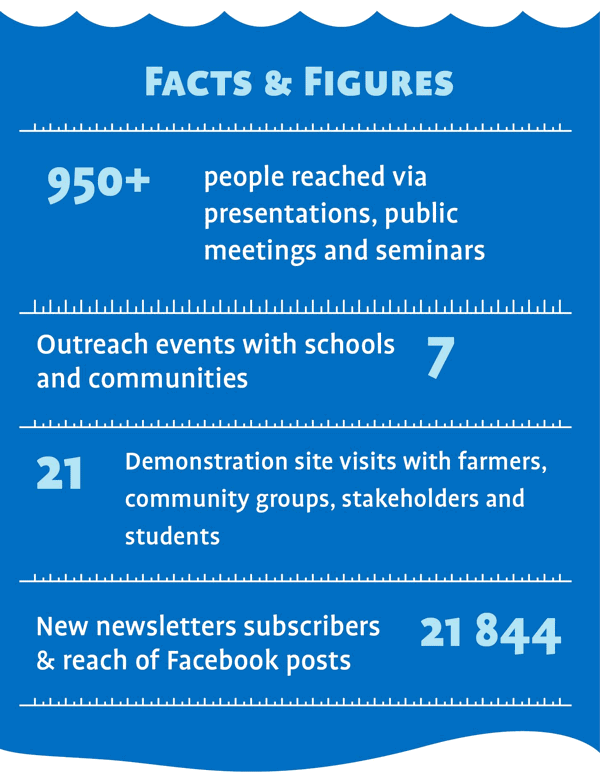CAREX and Living Water – a special relationship
CAREX’s Catherine Febria and Kristy Hogsden reflect on the amazing successes the partnership has created over the past four years to improve the nation’s waterways and what’s ahead.
The University of Canterbury’s Freshwater Ecology Research Group have been working hard to find new ways to improve the nation’s waterways.
Since 2014, the CAREX (Canterbury Waterway Rehabilitation Experiment) team has been working with farmers, iwi, councils and communities to help develop practical tools and solutions for aquatic weed, sediment, and nutrient management issues in lowland Canterbury and to improve agricultural waterway health.
Living Water, a 10-year partnership between Fonterra and the Department of Conservation, have supported CAREX with grants since 2014 and progressed to a full strategic partnership in 2017. Together, they are working to share expertise, create economies of scale, and find efficient ways to help scale up the research and knowledge gained to use in waterways across New Zealand.
We asked CAREX team members Dr. Catherine Febria and Dr. Kristy Hogsden about the progress they’ve made and what’s coming next.

What are some of the positive outcomes you’ve seen from the CAREX experiment so far?
One of the biggest positive outcomes has been the ability to conduct waterway restoration experiments on farms and scale up the lessons we have learned across the region. This has only been possible due to the rich network of farmers, farm managers, councils, industry, iwi, schools and communities that we work with. They have been big part of the journey, from co-developing trials and testing practical, alternative tools to sharing our research findings.
Working on farm and with stakeholders involved in freshwater management has also enriched the learning experiences of postgraduate and summer students involved in CAREX, by providing real-world contexts and meaningful connections to stakeholders.
We’re starting to see results too, with improvements in agricultural waterway health and function. For example, we’ve seen that within two years, Carex planted on the waters’ edge can grow to provide shade and outcompete nuisance aquatic weeds growing in the waterway.
How do you see the future of the experiment and what do you hope for?
We intend to grow our approach nationally, which will allow us to continue agricultural waterway restoration trials, helping improve the chances of restoration in waterways facing multiple issues. Ultimately, we want to make a difference to how fresh waters are managed across the country.
We need to fill gaps in our knowledge about the effectiveness of commonly-used tools, such as riparian planting and channel design. For example, do certain species of native plants offer other benefits for water quality? Can we enhance multiple functions including flood control and nutrient reductions, at the same time? Then, we want to see how these solutions can be scaled up to a catchment level to restore ecological health alongside cultural values.
We also want to recognise and understand the role that social, cultural, logistical, and economic institutions play in implementing restoration, so future projects will include a diversity of experts, questions and approaches to generate solutions for New Zealand’s agricultural waterways and their catchments.
Partnering with Living Water is an important part of that journey. We are excited to collaborate with them to trial tools on-farm and in waterways in the Ararira-LII catchment and we’re looking at ways we can work together to expand across the catchment.
How does the partnership with Living Water help CAREX?
Living Water has offered great opportunities for CAREX.
The first and most significant outcome of this partnership has been the grant to support the Silverstream research site together with the Simpson family and Five Springs farm. With Living Water’s support, CAREX has been able to enhance and add to the great work the Simpsons started in 2001 to create a 1-ha wetland. We’ve re-shaped 850m of waterway, added riparian plantings to enhance the waterway’s ecology, conducted trials to improve the management of nuisance aquatic weeds, installed sediment traps and monitored of a full range of ecological health indicators to better understand microbial contamination.
Our strategic research partnership, which began in 2017, offers CAREX the opportunity to scale solutions beyond Canterbury. We have a direct line of communication to both DOC and Fonterra to provide insight, oversight and examples of robust science to inform agricultural waterway rehabilitation across the country.

